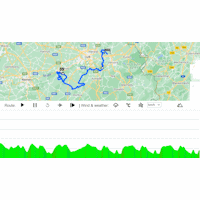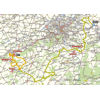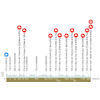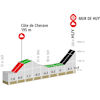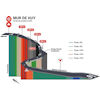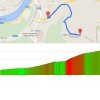Just like in 2020 the riders tackle the Côte de Trasenster in the run-up to the circuit. This time the Côte des Forges is also thrown in before the riders enter the circuit with 100 kilometres left to race.
The local lap features three climbs, Côte d’Ereffe, Côte de Cherave and the Wall of Huy. These are situated in the last 18.5 kilometres of the lap. So before the first passage on the line the riders have had a first taste of what’s it going to be like in the finale.
The Côte d’Ereffe is a 2.1 kilometres climb at 5%. The riders then descend into the valley of the Hoyoux river. Shortly, the 1.3 kilometers long Côte de Cherave appears. The first kilometre goes up at 8.5% before it continues as a false flat.
Following a downhill towards the Meusse river the route zigzags through Huy to the local Wall. The 1.3 kilometres climb at 9.6% opens relatively easy, only to kick in hard after the first 400 metres. The gradient never drops below 10% for 800 metres before the home straight levels out to 6%.
Alejandro Valverde is record holder with five victories. The recently retired Spaniard won La Flèche Wallonne in 2006 and in the period 2014-2017 before Julian Alaphilippe took over the baton in 2018, 2019 and 2021. Yet, last year a surprise winner emerged, as Dylan Teuns outgunned those two. Valverde finished 2 seconds down in second and Alaphilippe another 3 seconds further behind in fourth. Aleksandr Vlasov took third place.
Ride the route yourself? Download GPX Flèche Wallonne 2023.
Other interesting reads: results and start list 2023 Flèche Wallonne.
La Flèche Wallonne 2023: route, profiles, more
Click on the images to zoom
